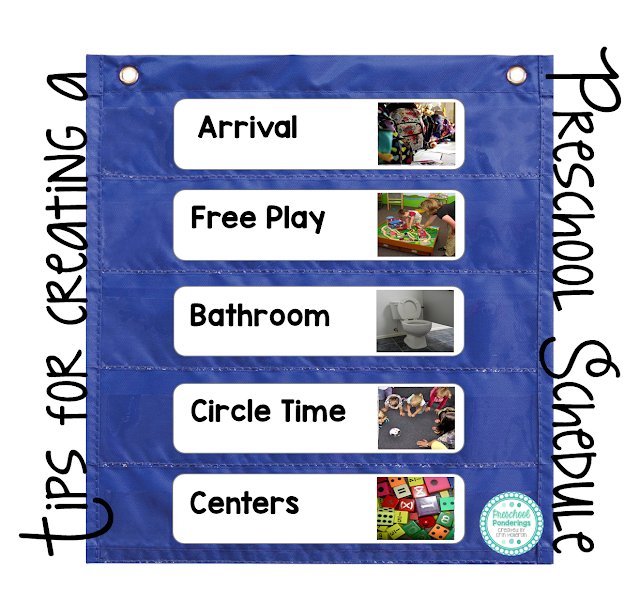Scheduling your preschool day
As a preschool teacher, one of the most important things that I had to consider each year was my daily schedule. I am the kind of person who follows a schedule closely – there are always exceptions, but most days the schedule kept the day from dragging o, and ensured that I was able to get everything done. My kiddos needed that schedule too. After the first couple of weeks they were able to anticipate what was coming next, and when certain important activities (like lunch, nap, and outside time) were.
While preschool teachers everywhere recognize that having a schedule is important, making your schedule is not necessarily easy. There are some things that you may be required to do at certain times (ugh, like the year that my outside time was 9am), and other things that you have the freedom to schedule whenever you want (like bathroom breaks, which depending on your age group may be frequently). The best schedule is one that works for you and your students, so there are a few factors that I suggest teachers consider when creating a daily schedule;
- Think about what time your students arrive. If the majority of your class arrives after 9:00 in the morning, then it probably isn’t the best idea to do circle time at 8:00, most of your class will miss it. On the other hand, if your students all arrive at the same time – promptly at 8:00 – then starting circle time at 8:15 is perfect for you.
- Consider meal times. If your program serves breakfast then you want to make sure that your students all have the opportunity to eat before your start your daily activities. It is always a good idea to plan a large motor activity – whether it be outside time or music and movement – before lunch so that children can get all of their wiggles out before you sit down to eat.
- Plan your transitions. If you know that coming in from the playground can get a little chaotic make sure that you plan something for children to do as they wait for others to take off their coats and wash their hands. This could be an audio book or a table activity, something that children can do independently while you help the others.
- think about when your children leave. Does everyone leave at the same time or do some stay longer than others? You may have to plan activities for those who stay later, but you’ll want to make sure that most of the children have the opportunity to participate in the majority of the activities.
- Leave ample time for unstructured play. Children need this time to be creative and learn to work together. Unstructured play should be more than half an hour long, if you cannot justify allotting this much time during the bulk of your day consider blocking out time in the early morning or late afternoon for children to play during your pick up and drop off times. This will also allow you to be available to parents during these times.
As you begin to create your schedule remember that it should also be flexible. It is okay to make changed if the schedule you planned just doesn’t work for your group. Every once and a while learning opportunities will come up that don’t fit into your schedule, that doesn’t mean that you shouldn’t take advantage of it, your schedule is meant to be a guide.
I hope these tips are helpful! Share yours in the comments!



